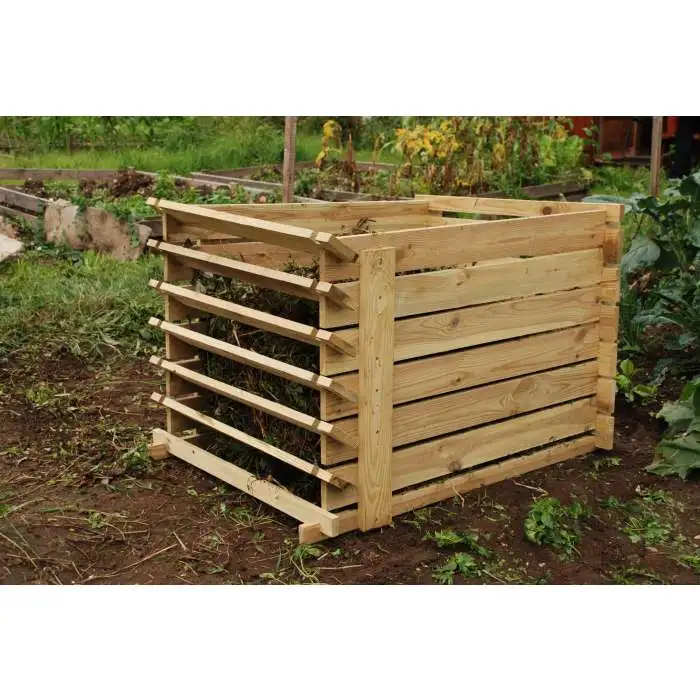Composting at home is one of the most rewarding and beneficial practices for any gardener. By recycling your kitchen scraps and yard waste into compost, you can nourish your garden soil and plants with nature’s own fertilizer.
Composting is also an easy and eco-friendly way to significantly reduce your household’s waste. With just a simple compost bin or pile, the natural process of decomposition transforms all your food and garden waste into a dark, crumbly, soil-like material called compost – essentially food for your plants and flowers.
Maintaining a compost area is simple too. Follow this beginner’s guide to learn just how to start composting at home. With a small time investment, you’ll be on your way to reaping the benefits and satisfaction of backyard composting for your garden.
Selecting a Compost Bin
A proper compost bin will make the process more efficient and aesthetically pleasing. Consider the following when selecting a bin:
- Enclosed design – A bin with a top, bottom, and sides will help retain heat and moisture while keeping pests out.
- Material – Plastic bins are inexpensive but can crack over time. Wood looks attractive but will decompose eventually. Wire mesh allows maximum airflow.
- Capacity – Look for a minimum capacity of 1 cubic yard to allow adequate composting volume.
- Accessibility – Choose a bin with a door or lid that makes it easy to turn and retrieve finished compost.
- Style – Some bins are stationary units while others are rotating barrels to mix as you turn. Select the style that best suits your needs.
For beginners, a multi-compartment plastic bin around 3′ x 3′ x 3′ is recommended. You can also construct a simple and cheap wooden bin out of scrap pallets or fencing. Locate your compost bin in the selected spot before starting your pile.
Selecting the Right Location
Choosing the ideal spot to set up your compost pile at home is important for efficient decomposition.
Consider the following:
- Accessibility – Select a spot near a water source that allows room to easily turn the pile. Allow 3 ft clearance on all sides.
- Sunlight – Opt for a shady or partly shady spot. Too much sun can dry out the compost; shade helps retain moisture.
- Drainage – Pick a level area of your yard that drains well after rain to prevent soggy conditions.
- Convenience – Locate the compost pile somewhat close to your kitchen for easy addition of food scraps.
- Aesthetics – Choose an out-of-the-way spot blocked by plants to keep your compost area discreet.
Take into account these factors when deciding where to set up your compost bin. Having the right location will make the composting process more efficient and hassle-free.

What to Compost
The bulk of your compost pile should consist of ‘brown’ and ‘green’ organic materials.
Browns – Provide carbon and fiber Dead leaves, branches, twigs, straw, wood chips
Greens – Provide nitrogen Fresh grass clippings, fruit and vegetable scraps, coffee grounds and filters, tea bags
Avoid Adding:
- Meat, fish, or dairy products
- Large branches or logs
- Weeds with seeds or root segments
- Diseased plant materials
- Pet waste
- Cooking oils or other fats
The key is balancing browns and greens while excluding ingredients that may introduce pests, diseases or inhibit decomposition. Aim for 2-3 parts browns to 1 part greens. Shred or chop larger pieces for faster composting. Follow these guidelines for a healthy, high-quality compost pile.
“Having the right mix of materials is crucial for a hot, fast compost pile.”
Ron Smith, Organic Gardener
Building Your Pile
Start by spreading 3-4 inches of “browns” like dead leaves, straw, or wood chips at the bottom for airflow. Then add a layer of “greens” like food scraps and grass clippings. Mix in a shovelful of garden soil which introduces decomposing microorganisms.
Repeat the browns, greens, soil pattern in layers until your bin is full. Moisten each layer as you build to a level of dampness like a wrung-out sponge. Aim for approximately 50 percent browns and 50 percent greens.
Maintaining Your Compost Turn or mix the contents of your compost pile weekly using a shovel or compost turning tool. This blends materials and speeds decomposition. Check moisture levels each time, watering lightly if your pile is dry.

Troubleshooting when composting at home
Composting is a natural process, but occasionally issues can arise. Here are some common composting at home problems and how to fix them:
Odor Problems
- Rotten Egg Smell – This indicates excess nitrogen. Turn the pile and mix in carbon-rich browns like leaves or straw to rebalance.
- Ammonia Smell – Too much green matter. Add more browns and turn pile to increase airflow.
- General Foul Odor – Lack of oxygen. Turn the pile to aerate and add coarse browns if very wet.
Pest Problems
- Rodents – Eliminate food scraps and meat. Cover with wire mesh or leaves.
- Flies & Maggots – Bury new food scraps in 8-10 inches deep. Keep pile balanced.
Moisture Imbalance
- Too dry – Compost needs 40-60% moisture. Water periodically when turning.
- Too wet – Turn pile and mix in dry browns like wood chips to absorb excess moisture.
Conclusion
The key is frequent monitoring and making adjustments. Address any issues right away and you’ll get back on track for successful composting.
In warm climates, compost can finish in 4-6 weeks. Cooler areas may take a few months. Finished compost will look dark, crumbly, and earthy-smelling. Stop adding materials as it nears completion.
Using Compost Spread an inch or two of finished compost over garden beds before planting seeds or seedlings. For transplants or existing plants, mix a handful or two into each hole before planting. Side-dress growing plants by sprinkling a ring of compost around the base every 2-3 weeks. Mix compost into potting soil for indoor plants as well.
Adding compost improves soil structure, moisture retention and nutrients for healthy plant growth!


